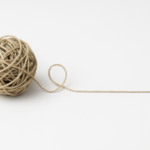Nostalgia. A word derived from the Greek for homesickness, it’s far more than the simple act of “looking back”, and nostalgic marketing demonstrates it. Nostalgia is tied firmly into our emotions; you’re not just remembering, but remembering fondly. Brands can leverage these associations to infuse campaigns with a rare touch of familiar magic. The very best can even bridge past and present – meeting the evolved needs of consumers without losing the promise of simplicity and trust.
In this blog, CEO Guy White takes a trip down memory lane to explore the draw of yesteryear on the consumers of today, and how, wielded incorrectly, nostalgic marketing can become a double-edged sword…
Nostalgia is sensory in the food and beverage categories
We know that taste transports us. Food holds a unique ability to unlock memories. When those memories are good, a brand can hitch its wagon to them and be in your life for years to come. Swedish Fish – it means something beside salmon in the Nordics, right? Your first Jalapeno Popper. The taste of Kraft Mac & Cheese. Goldfish Crackers, Oreos and more will be attached to many, many memories of happy times, childhood safety, parties and family get-togethers.
These are straightforward products that give a memorable sensory experience and can last as a go-to comfort food for many, decades on.

A great brand example of this in action is in beverage. Coca Cola is so embedded in our lives that someone can make the shape of the bottle with their hands and you’ll know it’s Coke. This is truly fascinating because, in every blind taste test, Pepsi is actually preferred. The difference is that Coke has helped you unlock happiness since you were a kid. So, it wins at the shelf.
Despite not being a seasonal product, Coke associated itself with the childlike, nostalgic wonder of the season, and its Christmas marketing works every year.
When nostalgia goes stale
Food brands lean into all of these things in a big way. This nostalgic pull gets you buying these brands today that adds to the emotional bank account you’ve amassed with them over the years.
“Nostalgia is a powerful force for some brands to keep people loyal, but can also lock some in the history books with no hope of returning to our shelves.”
But nostalgia can be a double-edged sword. Tastes move on. I can be nostalgic for something without wanting to buy it now. Take for example Lucky Charms. What a cereal! But the time for most parents to buy their kids frosted, bright green and pink cereal with marshmallows may have passed.
The brand is so synonymous with these now outmoded things, meaning it will be very hard to evolve it to the modern day equity requirements for an acceptable children’s breakfast. Just like an old movie. Maybe you’ll revisit it once in a while. But I certainly wouldn’t consider it a daily staple.
How can nostalgic marketing evolve with the times?
Nostalgia is a powerful force for some brands to keep people loyal, but can also lock some in the history books with no hope of returning to our shelves. Brands have to lean into the powerful force of nostalgia, while also remaining relevant for ever-changing tastes and trends.
“By combining relevant innovations with classic sensibilities you know that the flywheel will continue to spin for generations to come.”
Old Spice is a wonderful case study. In 1990 P&G bought Old Spice for $300m; it was a brand with a graying audience, so younger generations looked fondly on Old Spice as the deodorant from their childhood – it was the one granddad used to wear.
However, if one thing was going to stop you from buying Old Spice, it’s the fact that your granddad used to wear it.
P&G set about changing the brand’s fortune by hiring a famous football player – Isaiah Mustafa – and creating “that ad”. Suddenly Old Spice makes you smell like the man you want to emulate, and the brand is bigger than your granddad and free to be cool once again, while keeping the benefits of a long-standing reputation of reliability. It went on to be the top choice male personal care brand for 14 years.
Disney are simply magnificent at this. Disney know that parents will let their kids watch Disney cartoons more than others because they like to sit down and remember their childhoods when they watch alongside. By continuing to refresh their catalogue by combining relevant innovations with classic sensibilities you know that the flywheel will continue to spin for generations to come.
Combining heritage appeal with refreshed offerings keeps blending the best of old and new generations – but it continues to be a balancing act. With consumers’ most accurate, up-to-date values at the heart of your innovation, however, anything is possible.
(Independent research conducted by Catalyx)







